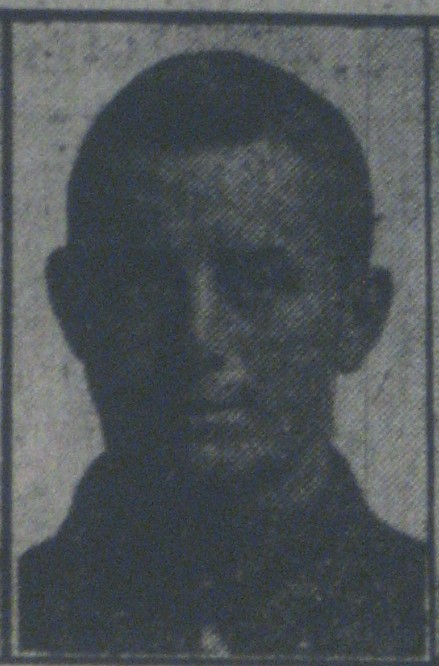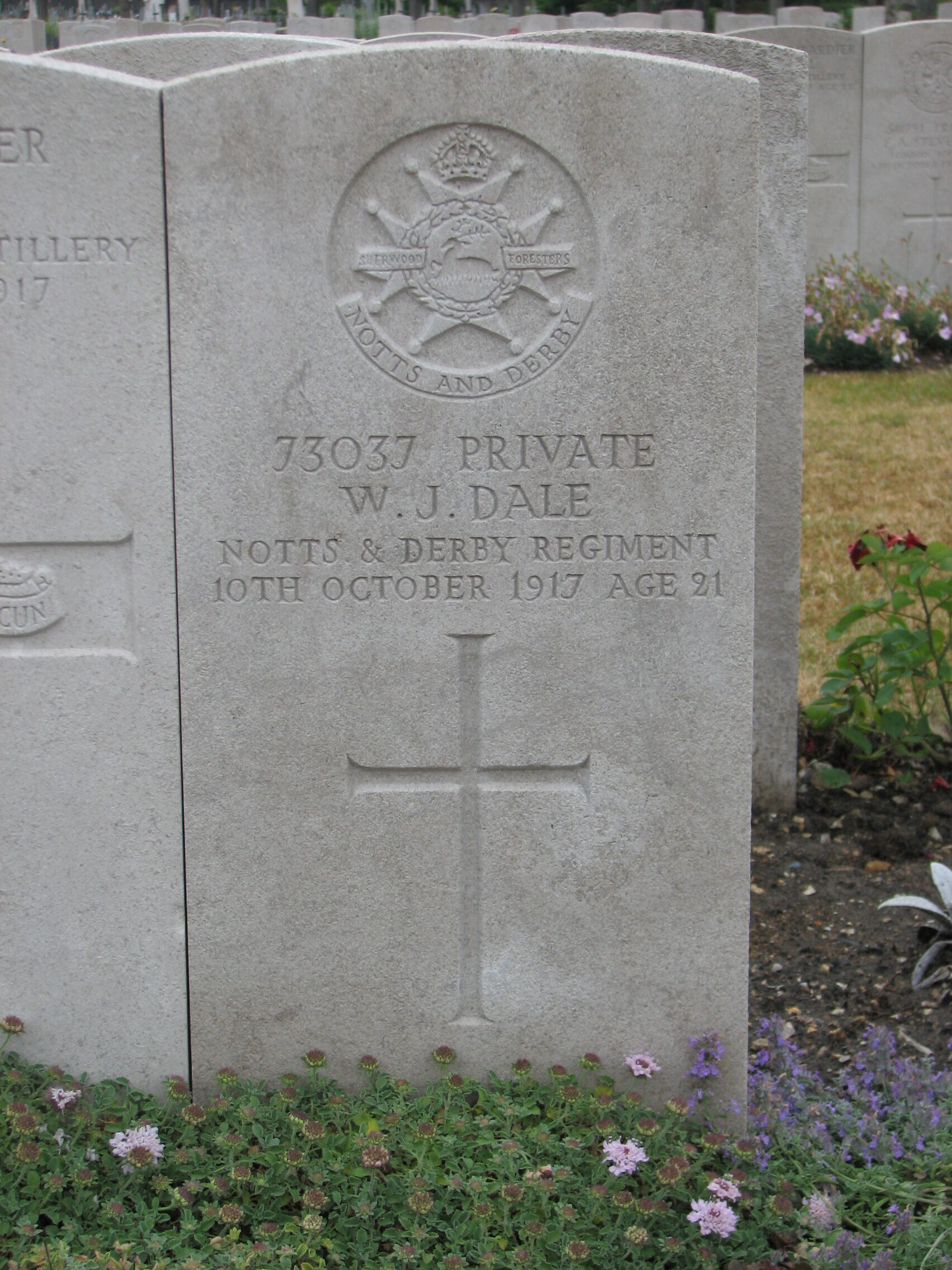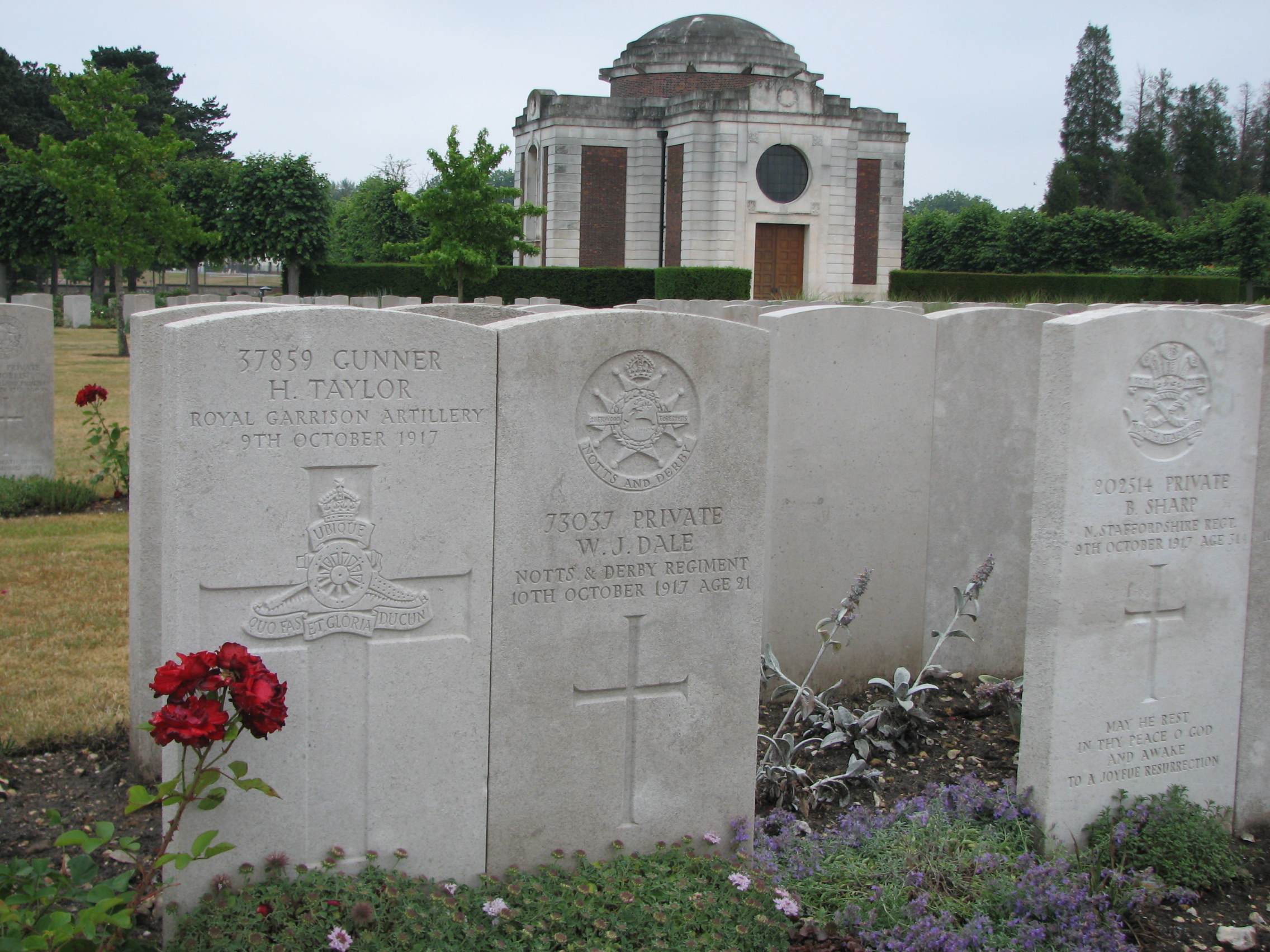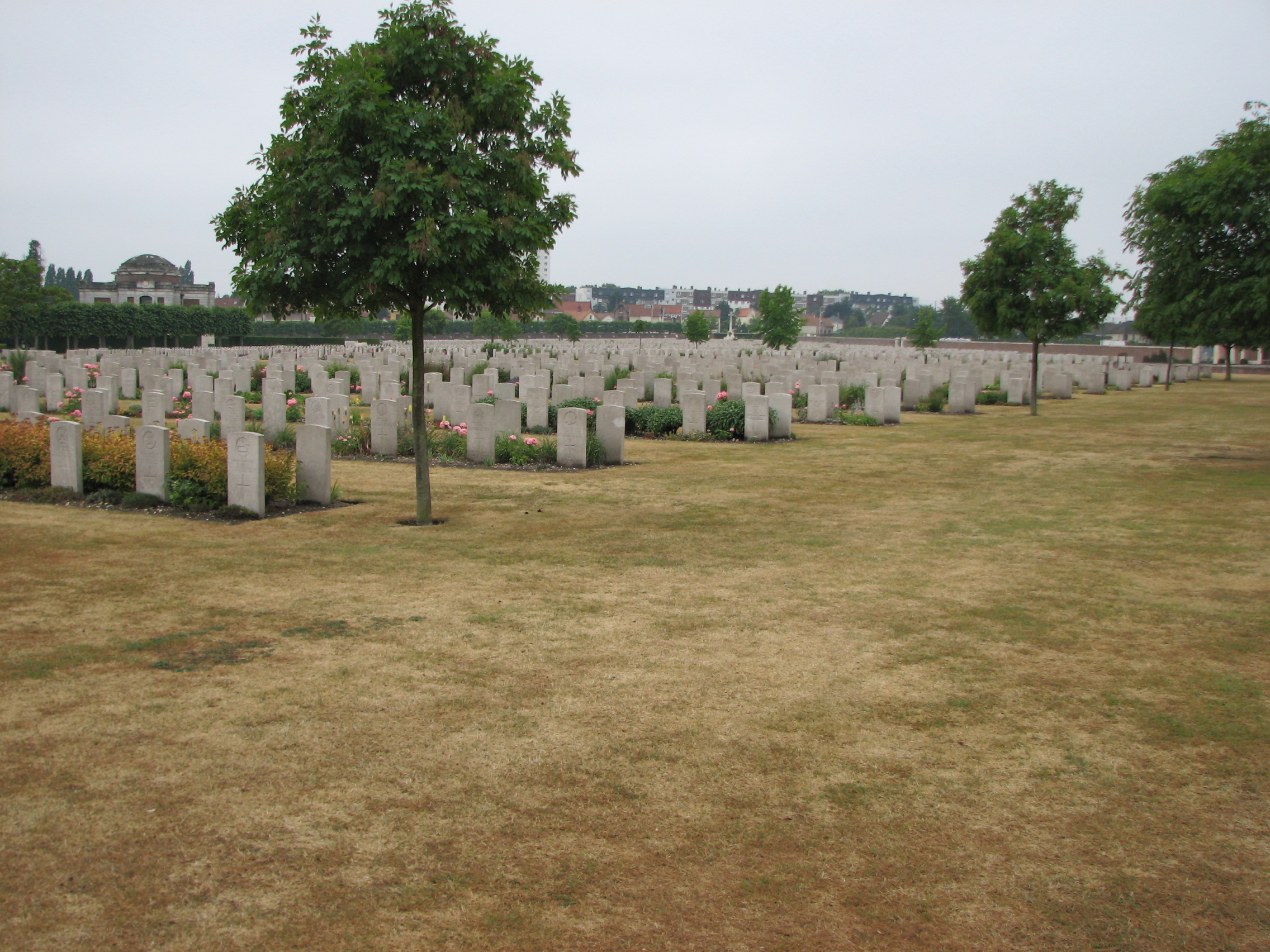William Dale (1896 - 1917)
Brother of Abram Dale and John Dale. William served on the Western Front with the Sherwood Foresters. He was seriously wounded during the Third Battle of Ypres and died in hospital six days later.
- 33
- Died in the Great War
- 51.979791, 1.021551
Details
| Name: | William John Dale |
| Service: | British Army |
| Unit: | 9th Battalion, Sherwood Foresters (Nottinghamshire and Derbyshire Regiment) |
| Regimental Number: | 73037 |
| Rank: | Private |
| Date of Death: | 10th October 1917 |
| Age: | 21 |
| Buried: | Block P, Plot III, Row F, Grave 7B, St. Sever Cemetery Extension, Rouen, France |
Family Background and Early Life
William Dale was born on 16th July 1896, the second son Charles Abram and Esther Dale (nee Clark).
Charles who was from East Bergholt was a Farm Labourer at the time of William’s birth, though he later became a Horseman on a Farm. He and Esther – who was also from East Bergholt – married in 1889, and for a short time they lived at Mistley where Charles was employed as a Maltster. Their first child – a daughter who they called Emily – was born at Mistley, but they moved back to East Bergholt shortly afterwards.
Together Charles and Ester would have 11 children. They lived near High Trees Farm, though their address was also stated as 11 Box Iron, Box Corner or Quintons Corner.
William attended the village school from February 1901 until July 1909, leaving – as was usual for the time – just after his 13th birthday. After he left school, he initially found work as a Gardener, but was later employed as a Carter by Mr Aldous.
The Group Scheme
He volunteered for service in the British Army under the Group Scheme on 22nd February 1916, at Ipswich. 1 More commonly called the Derby Scheme, after Lord Derby, the Director-General of Recruiting. It had originally run from October to December 1915, however the numbers who volunteered under the Scheme fell far short of what the government had hoped for. They therefore temporarily reopened it on 10th January 1916 whilst they prepared for conscription. The Group Scheme ceased on 1st March 1916. After that date – with certain specified exceptions – everybody was conscripted into the Armed Forces. The Scheme was effectively a last ditch attempt by the government to increase recruitment by voluntary means, before they had to resort to conscription.
When William formally enlisted – as permitted under the terms of the Group Scheme – he then chose to become a part of the Army Reserve, which meant that he could go back to his civilian occupation until he was required.
The surviving pages of his Service Papers show that at the time he joined up William was 5 foot 8 ¼ inches tall, weighed 129 lbs and his physical development was described as good.
William was called up on 4th April 1916, and was posted initially to the 8th Battalion of the Northamptonshire Regiment to undertake Basic Training. At that time, the Battalion were located near Sittingbourne in Kent.
France
Just 3 months later, on 6th July 1916 – William was sent to join the British Expeditionary Force in France. As part of this move, he was nominally posted to the Northamptonshire Regiment’s 1st Battalion, which had been in France since August 1914.
In actual fact, William never actually joined the 1st Northamptons in the field: like many soldiers newly arrived in France at this point in the War, he was sent to an Infantry Base Depot – in his case at Etaples on the Channel coast. There, the soldier underwent a period of further training, before being posted to his unit.
In the middle of July, William was posted to the 11th Battalion of the Sherwood Foresters (Nottinghamshire and Derbyshire Regiment). The Battalion had suffered 70% casualties on the 1st of July, during the fighting on the first day of the Battle of the Somme. William was one of the large number of replacements for those losses.
The 11th Sherwood Foresters rejoined the Battle when they went back into the trenches on 29th July, near the village of Bazentin le Petit. They spent 4 days in the firing line, and then another 6 days in the Support Line at Mametz Wood.
Trench Fever
This was William’s first spell at the Front, however it also looks to have been his last for some time. In the middle of August, he was transferred to a Convalescent Depot suffering from what was described as P.U.O. – Pyrexia of Unknown Origin – this was the medical term usually applied to Enteric Fever, or Trench Fever as it is better known. 2 Trench Fever – caused by body lice – was easily spread amongst the soldiers. Typically lasting for 5 days, it resulted in symptoms similar to Influenza or Typhoid. It was not unusual for the sufferer to have multiple relapses.
It appears that William may not have rejoined the Battalion in the field, but looks to have spent much of the next 4 months in Hospital, and at various Convalescent Depots.
During this period – on 6th October – William was formally transferred to the Sherwood Foresters 9th Battalion – though he may well not have actually joined them in the field until early December.
The 9th Sherwood Foresters had fought at Gallipoli the previous year, and after a spell in Egypt they arrived in France in July 1916. Over the course of the autumn, they saw heavy fighting in the Battle of the Somme.
Much of the first 5 months of 1917 was spent by the Battalion in the rear areas, either training or carrying out labouring work. In late May, they moved to Belgium, where they spent 2 weeks preparing for an offensive planned against the Messines Ridge, south of Ypres.
Battle of Messines
The Battle of Messines between 7th June and 14th June 1917, is perhaps best known for the detonation of 19 mines under German positions along the Ridge, at the outset of the offensive. The offensive succeeded in its aim of pushing the Germans off the high ground south of Ypres, with comparatively small losses.
The 9th were not involved in the immediate assault, and by the time they were sent forward in the afternoon much of the Ridge had fallen, and the Germans retreated. As a result, the Battalion reached their objectives around Oosttaverne with limited losses, and dug in to consolidate the gains.
During the second half of July, whilst preparations were made for the opening of the B.E.F.’s summer offensive around Ypres, the 9th’s parent Brigade was responsible for holding the length of the front lines usually allocated to an entire Corps. During this 2 week tour of duty, the 9th Battalion suffered almost 100 casualties.
Third Battle of Ypres
The British Offensive since named the Third Battles of Ypres, now commonly (albeit incorrectly) called the Battle of Passchendaele, was launched on 31st July 1917. Over the next 3½ months, the B.E.F., and many of those from the Dominion forces, would fight in often appalling conditions to eventually secure limited territorial gains. 3 Despite the limited territorial gains made by the Allies, it has been suggested that the Third Battles of Ypres brought the German Army close to breaking point.
The 9th Sherwood Foresters took a minor role in the Offensive during the second half of August, around the village of Langemarck before spending September in the rear areas, training for their next attack.
Their next assault was to form part of a wider British attack on 4th October 1917 that has since been named the Battle of Broodseinde. It is generally regarded as the most successful attack of the entire Third Battles of Ypres.
The Battalion arrived at the Front during the evening of 2nd October, ready for the attack on the morning of 4th. The attack was launched at 5.00 a.m., and the Battalion’s objectives were located just to the west of the village of Poelcapelle. In the face of heavy machine gun fire, and despite rifles jamming with mud and wet, the Battalion gained their objective. They suffered heavy casualties, one of those being William, who was wounded. 4 For his actions in the attack of 4th October 1917, one of William’s mates – Acting Corporal Fred Greaves, from Derbyshire – was awarded the Victoria Cross. Fred wrote down the names of those of his friends who were killed or wounded, and William’s name is one. (Based on information kindly provided by John Stephen Morse – author of “9th Service Battalion, The Sherwood Foresters”, Tommies Guides, 2007 – who knew Fred).
William had received wounds to his left thigh. He was processed through the casualty evacuation chain, and admitted to the No 1 Australian General Hospital, situated in Rouen, Normandy. By this stage, gangrene had set in.
William died of his wounds on 10th October 1917, aged 21. He was buried in the St. Sever Cemetery Extension, in Rouen.
Postscript
Less than 2 months later after William’s death, his younger brother John was killed in action on 30th November, during the Battle of Cambrai. 5 John Dale of the 2nd Battalion, of the Coldstream Guards, was 20 when he was killed. John has no known grave, and is commemorated on the Cambrai Memorial, at Louverval, France. Charles and Esther suffered a further loss the following year, when their eldest son Abram, died of wounds in May 1918. 6 Abram Dale of the 11th Battalion, the Essex Regiment had joined up in September 1914, and served in France since August 1915. He died of wounds on 26th May 1918, aged 23. Abram is buried in the Esquelbecq Military Cemetery, France.
Charles and Esther remained living in East Bergholt after the War. Esther Dale died in 1934 at the age of 66 and Charles died in 1950 at the age of 84. Both are buried in East Bergholt Cemetery.
Copyright © Mark Ashmore, 2024
- 33
- Died in the Great War
- 51.979791, 1.021551




